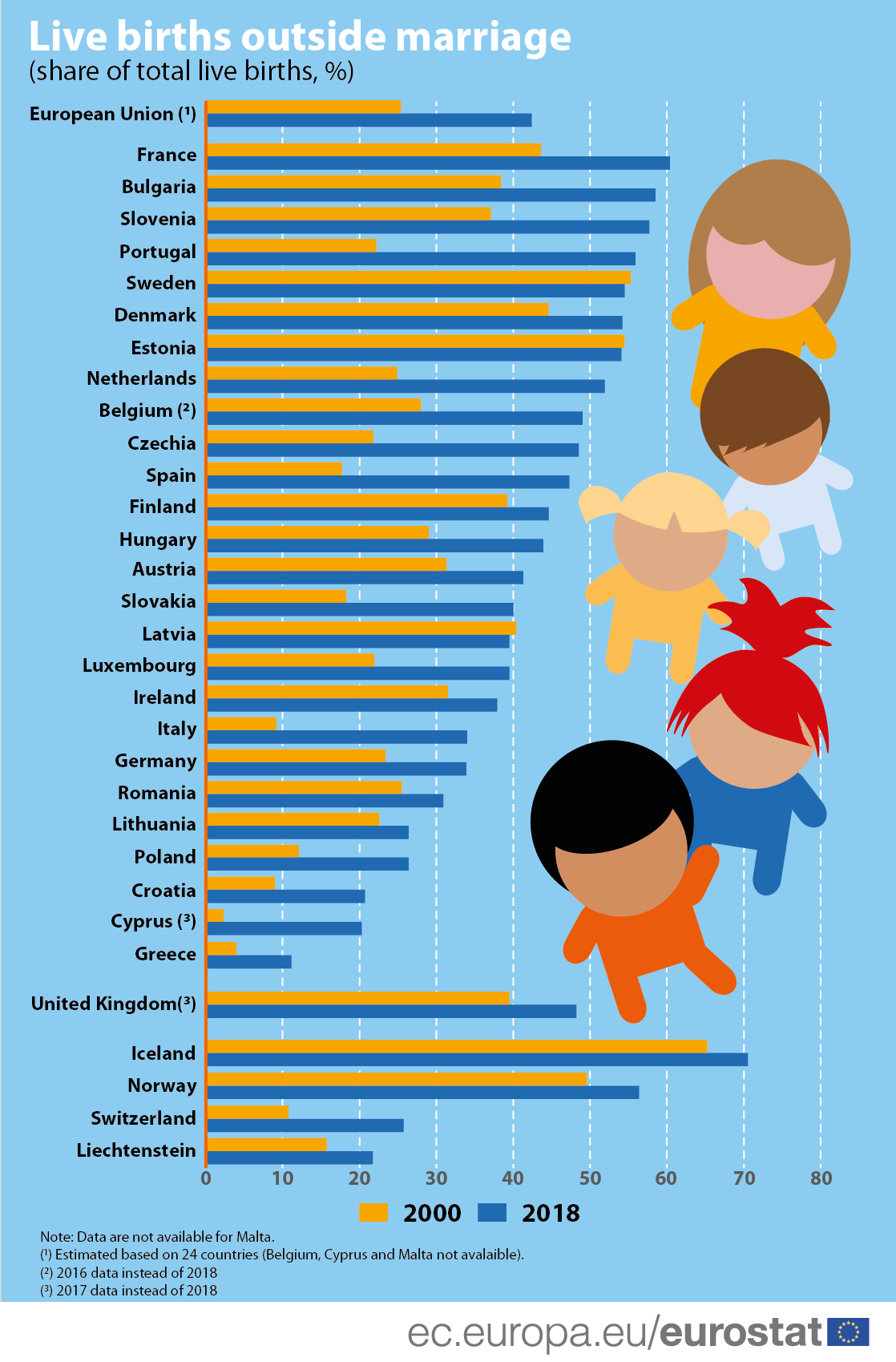
The proportion of live births outside marriage in the EU stood at 42% in 2018. This is 17 percentage points above the value in 2000. It signals new patterns of family formation alongside the more traditional model where children were born within a marriage. Extramarital births occur in non-marital relationships, among cohabiting couples and to lone parents.
In 2018, extramarital births outnumbered births inside marriages in eight EU Member States: France (60%), Bulgaria (59%), Slovenia (58%), Portugal (56%), Sweden (55%), Denmark and Estonia (both 54%) as well as the Netherlands (52%).
Greece and Croatia were at the other end of the spectrum along with Lithuania and Poland as more than 70% of births in each of these Member States occurred within marriages.
Source data: Eurostat demo_find
Extramarital births increased in almost every EU Member State in 2018 compared to 2000. The exceptions are Estonia, Latvia and Sweden that remained relatively stable with less than 1 percentage point decrease. The Iberian countries, Portugal and Spain, were the two countries where births outside marriage rose the most between 2000 and 2018 (+33.7 and +29.6 percentage points respectively).
For more information, take a look at the Statistics Explained article on Marriage and divorce statistics.
Note: The European Union (EU) includes 27 EU Member States. The United Kingdom left the European Union on 31 January 2020. Further information is published here.
To contact us, please visit our User Support page.
For press queries, please contact our Media Support.


